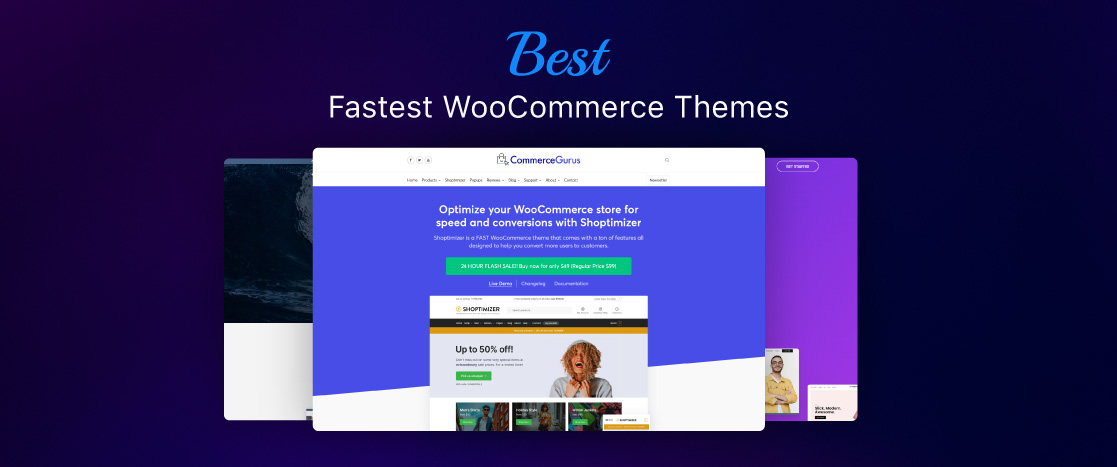
Best Ecommerce Product Page Design Strategies for 2024
- What is a Ecommerce Product Page?
- The Importance of Product Page Design
- Ecommerce Product Page Design: At A Glance
- Why Benefits Matter More Than Features
- Key Elements of Effective Ecommerce Product Pages
- Crafting the Perfect Product Page Layout
- Mastering Mobile Optimization
- Continual Testing and Optimization
- Inspiring Product Page Ideas
- Maximizing Sales with Product Page Optimization Techniques
- 10 Key Takeaways For Creating Best Product Page Designs
- Conclusion
Ecommerce product page design is a critical factor in increasing sales and providing excellent customer experiences. As the ecommerce landscape continues to evolve in 2024, businesses must stay ahead by implementing innovative strategies that engage customers and optimize conversion rates. This comprehensive guide explores the best practices for designing effective ecommerce product pages, helping you create pages that not only captivate but also convert.
- What is a Ecommerce Product Page?
- The Importance of Product Page Design
- Ecommerce Product Page Design: At A Glance
- Why Benefits Matter More Than Features
- Key Elements of Effective Ecommerce Product Pages
- Crafting the Perfect Product Page Layout
- Mastering Mobile Optimization
- Continual Testing and Optimization
- Inspiring Product Page Ideas
- Maximizing Sales with Product Page Optimization Techniques
- 10 Key Takeaways For Creating Best Product Page Designs
- Conclusion
What is a Ecommerce Product Page?
An ecommerce product page is a dedicated web page that showcases a specific product available for purchase. The design of this page is crucial as it provides all the necessary information that customers need to make informed buying decisions. Key elements of a product page include the product title, high-quality images, detailed descriptions, pricing, and an “Add to Cart” button. Additional features like customer reviews, stock information, shipping details, and related products further enrich the user experience and drive conversions.
The Importance of Product Page Design
A well-designed product page is more than just visually appealing; it is also functional and persuasive. Every element, from the layout to the content, should be carefully crafted to guide customers towards making a purchase. In 2024, product page design is influenced by several trends, including the rise of mobile commerce, the growing importance of personalization, and the demand for a superior user experience. Understanding these trends and integrating them into your product page design is essential for staying competitive in the ecommerce space.
Ecommerce Product Page Design: At A Glance
An eCommerce product page is a web page on an online store that showcases a specific product available for purchase. It’s designed to provide all the necessary information a customer might need to make a buying decision. Key elements typically include:
- Product Title: The name of the product.
- Product Images: High-quality images showing the product from various angles.
- Product Description: A detailed explanation of the product’s features, benefits, and specifications.
- Price: The cost of the product, including any discounts or special offers.
- Add to Cart Button: A call-to-action button that allows customers to add the product to their shopping cart.
- Product Reviews and Ratings: Customer feedback that helps build trust and influence buying decisions.
- Stock Information: Availability status, such as whether the product is in stock or out of stock.
- Shipping and Return Information: Details on delivery times, shipping costs, and return policies.
- Related Products: Recommendations for similar or complementary products.
The goal of an ecommerce product page is to convert visitors into customers by providing them with all the information they need to confidently make a purchase.
Why Benefits Matter More Than Features
In the realm of ecommerce, understanding the distinction between benefits and features is crucial for creating compelling product descriptions that resonate with customers.
- Features refer to the factual, technical, or physical characteristics of a product. These are the specific details about what a product is or what it can do. For example, a feature of a smartphone might be its 12-megapixel camera or its 6-inch OLED display.
- Benefits, on the other hand, explain the value those features provide to the customer. Benefits focus on how the product’s features will improve the customer’s life, solve a problem, or fulfill a need. Using the same example, the benefit of a 12-megapixel camera might be the ability to capture stunning, high-quality photos that preserve memories in vivid detail.
While features are important for understanding what a product does, they often fail to convey the personal value or emotional connection that drives purchasing decisions.
Focusing on Customer Benefits
While product features are important, customers are more interested in how those features benefit them. In 2024, effective product descriptions emphasize the benefits, showing customers how the product can solve their problems or enhance their lives. This approach makes the product more appealing and relevant to the customer.
Writing from the Customer’s Perspective
To effectively convey benefits, writing from the customer’s point of view is essential. This involves understanding their needs, preferences, and pain points. In 2024, businesses that succeed in crafting benefit-focused, customer-centric content will see higher engagement and conversion rates.
Implementing Benefit-Focused Copy
Leading with benefits in product descriptions and supporting them with relevant features is a strategy that resonates with customers. In 2024, complementing this copy with high-quality visuals and customer testimonials enhances its effectiveness, making the product more compelling.
Key Elements of Effective Ecommerce Product Pages
Creating a successful ecommerce product page involves combining several key elements to engage customers and drive conversions. High-quality visuals play a crucial role in capturing attention, while clear, engaging product descriptions highlight both features and benefits. Strong calls-to-action (CTAs) guide users towards purchasing, and personalized recommendations enhance the shopping experience. Together, these elements create a persuasive and user-friendly shopping environment.
High-Quality Product Images
In 2024, the visual representation of products remains a top priority for ecommerce businesses. High-quality images are essential for capturing the attention of potential customers and significantly influence purchasing decisions. Interactive and 360-degree images are becoming more prevalent, allowing customers to explore products from multiple angles and gain a better understanding of what they are purchasing.
Compelling Product Descriptions
Product descriptions should be more than just informative; they should be engaging and tailored to the needs of the target audience. In 2024, storytelling techniques are increasingly used to make product descriptions more compelling, helping to create an emotional connection with customers. By highlighting the key features and benefits, product descriptions can effectively address customer pain points and drive conversions.
Personalization for Enhanced Customer Engagement
Personalization is a powerful tool in ecommerce. By leveraging customer data, businesses can deliver personalized product recommendations and messaging that resonate with individual preferences. In 2024, personalization goes beyond basic recommendations, incorporating advanced algorithms that enhance the shopping experience and increase customer satisfaction.
Leveraging Social Proof
Social proof, including customer reviews, ratings, and testimonials, is crucial for building trust and credibility. In 2024, the integration of user-generated content such as photos and videos on product pages becomes even more significant. These elements not only provide social proof but also showcase products in real-life situations, making them more relatable and trustworthy.
Effective Call-to-Action (CTA) Design
The call-to-action (CTA) is a pivotal element in driving conversions. In 2024, CTAs must be strategically placed, visible, and persuasive. Techniques such as creating a sense of urgency or scarcity can be employed to encourage customers to act quickly. A well-crafted CTA can significantly impact the success of a product page, turning potential customers into buyers.
Crafting the Perfect Product Page Layout
Designing an effective product page layout is key to guiding customers through a seamless shopping experience. A clean and organized structure ensures that essential information, such as product details, pricing, and calls-to-action, is easy to find and understand. The use of high-quality visuals and strategically placed CTAs helps maintain user engagement and encourages purchases. Additionally, intuitive navigation and consistent branding throughout the page contribute to a cohesive look and feel, reinforcing the brand’s identity while making the shopping process straightforward and enjoyable. An optimized layout not only enhances aesthetics but also improves functionality, driving better user satisfaction and conversion rates.
Layout and Design Principles
The layout and design of a product page significantly impact how customers interact with it. A clean, organized layout that prioritizes usability will keep customers engaged and increase the likelihood of conversion. In 2024, the use of clear and concise product information, intuitive navigation, and strategically placed CTAs is critical.
Consistent Branding and Visuals
Maintaining consistent branding across all product pages is vital for building trust and reinforcing brand identity. In 2024, consistent use of color schemes, typography, and visual styles that align with your brand helps create a cohesive and professional look. High-quality visuals, including professional photography and high-resolution images, are essential for showcasing products effectively.
Mastering Mobile Optimization
Optimizing ecommerce sites for mobile devices is essential in today’s mobile-centric world. It involves designing responsive pages that adapt seamlessly to various screen sizes, ensuring quick load times to prevent user frustration, and simplifying navigation for easy use on smaller screens. By prioritizing mobile-first design principles, businesses can enhance the user experience, increase engagement, and drive higher conversion rates. Effective mobile optimization ensures that customers can effortlessly browse, shop, and complete purchases on their devices, regardless of where they are or what device they’re using.
The Rise of Mobile Commerce
With the increasing reliance on mobile devices for online shopping, optimizing product pages for mobile is no longer optional. In 2024, mobile-first design principles are essential. This includes responsive design, fast loading times, and intuitive navigation, all of which are critical for delivering a seamless mobile shopping experience.
Responsive Design and Fast Loading Times
Responsive design ensures that product pages look and function well on all devices, regardless of screen size. In 2024, quick loading times are also crucial, as they directly impact user experience and conversion rates. Optimizing images, minimizing the use of heavy scripts, and leveraging browser caching are some of the strategies used to enhance mobile performance.
Continual Testing and Optimization
Ongoing testing and refinement are crucial for maintaining and improving the performance of ecommerce product pages. This process involves regularly conducting A/B tests to evaluate different elements such as layouts, images, and calls-to-action, identifying which variations yield the best results. Analyzing data from user interactions helps pinpoint areas for improvement, allowing for targeted adjustments that enhance the user experience and increase conversion rates. By continuously optimizing based on real-time insights, businesses can stay ahead of trends, meet evolving customer expectations, and ensure that their product pages consistently deliver optimal results.
The Importance of A/B Testing
Product pages should never be static. Continual testing and optimization are essential for maintaining their effectiveness. In 2024, A/B testing different layouts, images, CTAs, and other elements is a common practice to identify what works best. Regular analysis of performance data helps businesses make informed decisions and continually improve their product pages.
SEO Optimization for Product Pages
SEO remains a key factor in driving organic traffic to product pages. In 2024, optimizing product titles, descriptions, and metadata with relevant keywords is essential for improving search engine rankings. Additionally, optimizing images with descriptive file names and alt text further enhances SEO performance.
Inspiring Product Page Ideas
Creative strategies that enhance ecommerce product pages by making them more engaging and customer-centric can transform the online shopping experience. These ideas include using interactive product imagery, such as 360-degree views and zoom functionality, to allow customers to explore products in detail, building confidence in their purchasing decisions. Integrating user-generated content like reviews and photos adds authenticity and trust by showcasing real-life perspectives. Personalized product recommendations, driven by AI and machine learning, tailor the shopping experience to individual preferences, increasing engagement and driving upsells. Additionally, product videos that demonstrate the product in action effectively communicate its value, helping customers better understand its features and benefits.
Interactive Product Imagery
Interactive product imagery, such as 360-degree views and zoom functionality, provides customers with an immersive shopping experience. In 2024, these features are increasingly used to help customers thoroughly examine products, boosting confidence in their purchase decisions.
User-Generated Content Integration
User-generated content, such as customer reviews and photos, is invaluable for building authenticity and trust. In 2024, integrating these elements seamlessly into product pages enhances the shopping experience by providing real-life perspectives and social proof.
Personalized Product Recommendations
Personalized product recommendations powered by artificial intelligence and machine learning are becoming standard on ecommerce sites in 2024. These recommendations, based on customer preferences and browsing history, significantly increase engagement and drive upsells.
Innovative Product Videos
Product videos that demonstrate the product in action are powerful tools for engaging customers. In 2024, ecommerce businesses are increasingly using video content to highlight product features and benefits, making it easier for customers to understand the value proposition.
Maximizing Sales with Product Page Optimization Techniques
Targeted optimization strategies for ecommerce product pages are crucial for boosting sales and enhancing user experience. Techniques like conversion rate optimization (CRO) focus on minimizing obstacles in the customer journey, making it easier for users to complete purchases. Elements such as persuasive copywriting, compelling imagery, and a streamlined checkout process significantly improve conversion rates. Additionally, using analytics and data-driven insights ensures continuous improvement. By regularly monitoring key metrics like bounce rates and conversion rates, businesses can identify areas for enhancement and make informed adjustments, ensuring their product pages consistently deliver strong performance.
Conversion Rate Optimization (CRO)
Conversion rate optimization (CRO) involves refining product pages to minimize friction and maximize conversions. In 2024, techniques such as persuasive copywriting, compelling imagery, and streamlined checkout processes are essential for optimizing conversion rates.
Analytics and Data-Driven Decisions
In 2024, data-driven decision-making is crucial for ecommerce success. Regularly monitoring performance metrics such as bounce rates, conversion rates, and average session duration helps identify areas for improvement. Using these insights, businesses can make informed decisions that enhance the effectiveness of their product pages.
10 Key Takeaways For Creating Best Product Page Designs
The best ecommerce product pages are simple and effective. These takeaways can be used as a checklist for anyone who needs inspiration from time to time.
- High-quality images and clear descriptions drive customer engagement and purchase decisions.
- Personalized recommendations and user-generated content boost trust and conversion rates.
- Strategic CTAs guide customers through the buying process and increase conversions.
- Mobile optimization through responsive design and quick load times ensures a seamless shopping experience.
- Continual A/B testing and data-driven decisions refine product pages and enhance user experience.
- Interactive content like 360-degree views and product videos increase customer confidence.
- CRO focuses on reducing friction and streamlining checkout to maximize sales.
- Consistent branding and a clean layout build trust and reinforce brand identity.
- SEO optimization improves search rankings and drives organic traffic.
- Data-driven insights help identify areas for improvement and ensure consistent performance.
Conclusion
Mastering ecommerce product page design in 2024 requires a blend of creativity, technical expertise, and customer-centric thinking. By incorporating innovative design elements, optimizing for mobile, and continually testing and refining your pages, you can create a shopping experience that not only meets but exceeds customer expectations. With these strategies, your ecommerce business will be well-positioned to thrive in the competitive digital marketplace.





